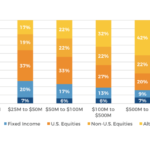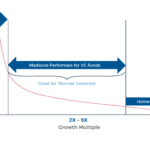Welcome to the June 2018 issue of the Latest News in Financial Advisor #FinTech – where we look at the big news, announcements, and underlying trends and developments that are emerging in the world of technology solutions for financial advisors and wealth management!
This month's edition kicks off with the buzz from the Envestnet Advisor Summit… that Envestnet is shifting from a focus on investment management, financial planning, and wealth management, towards a new category it calls “Financial Wellness”. Which is not meant to be the employer-delivered-financial-education version of a Financial Wellness program, but a more holistic advisor technology platform aiming to cover all of the relevant areas of a client’s financial health, including not only planning, investments, and insurance (protection), but also credit/debt, and budgeting/cash flow as well. Which leaves Envestnet incredibly well positioned for the ongoing shift of financial advisors from products to advice, and makes its 2015 acquisition of Yodlee look increasingly savvy as holistic financial wellness requires holistic account aggregation to power it!
From there, the latest highlights also include a number of interesting advisor technology announcements, including:
- Principal Financial acquires RobustWealth as yet another old-line insurer aims to get more digitally savvy
- Private equity firm Aquiline acquires a majority stake in RIAInABox as compliance software becomes an advisor tech category of its own
- LearnVest shuts down its financial planning offering but may still be a success for Northwestern Mutual as its financial planning and PFM technology is integrated into the Northwestern core
- AdvicePay announces the first ever “advisor crowdfunding” initiative, in an effort to raise $2M of new capital without taking on the conflicts of Venture Capital firms
Read the analysis about these announcements, and a discussion of more trends in advisor technology, in this month's column, including Vestwell partnering with payroll processor Namely to expand distribution of its small-business 401(k) offering, Vestmark launches a new Model Trading Service as the shift to centrally managed portfolios in RIAs and IBDs is leading to a new desire to outsource the implementation, and Fidelity showcases the prototype of a new “Cora” virtual reality assistant for clients as Schwab launches two new Digital Accelerator Hubs. In addition, we highlight the rise of another new category of advisor software: Student Loan Analysis and Modeling tools, as the shift to pursue Gen X and Gen Y clients leads to a demand for new types of software to service them.
And be certain to read to the end, where we have provided an update to our popular new “Financial Advisor FinTech Solutions Map”, including a number of new companies and categories!
I hope you're continuing to find this new column on financial advisor technology to be helpful! Please share your comments at the end and let me know what you think!
*And for #AdvisorTech companies who want to submit their tech announcements for consideration in future issues, please submit to [email protected]!









